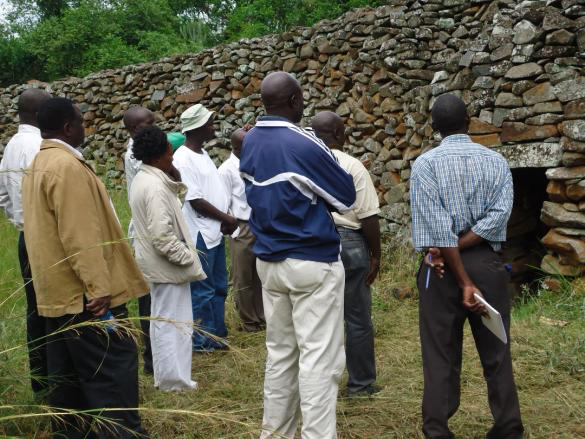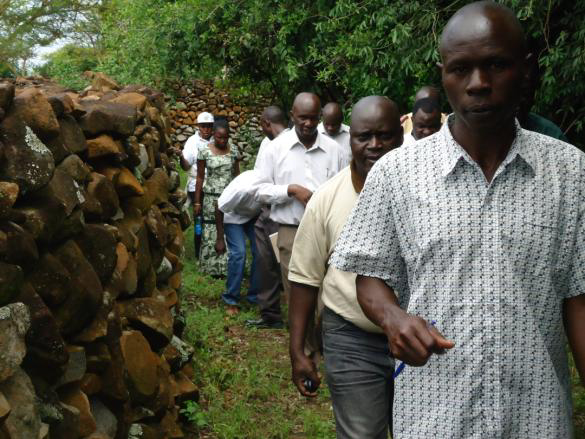January 20, 2012
by Isaya Onjala


The AIA-funded project at Thimlich Ohinga was pleased to conduct its first stakeholders’ workshop in December 2011, which was attended by 18 participants from different organizations, including National Museums of Kenya (NMK), the Ministry of Tourism, and the Maendeleo Ya Wanawake Organization, a women’s empowerment group in Kenya. There were three main objectives of this workshop: first, to highlight and review conservation and development initiatives at the site; second, to discuss the possible role(s) of different stakeholders in establishing sustainable conservation practices; and third, to discuss major themes that were provided in the hopes of enacting these sustainable practices.
Four themes, listed below, were proposed and effectively used by the participants to make decisions concerning the management and conservation of the site.
1) Sustainable conservation of a cultural landscape is only possible with widespread community support and participation.
2) Collaboratively developed national and regional goals for improving Thimlich Ohinga are needed to provide direction for heritage development.
3) Conservation and development incentives should be consistent over time, easily manageable, able to attract funding, and flexible enough to meet both local needs and provide adequate economic returns for the community, in addition to management of sustainable conservation activities.
4) Research must be integrated and focused on providing information that can be put to use towards understanding the outcomes of various activities and management practices at different levels.
The above themes guided the discussions, enabling the participants to raise important issues for effective future management and conservation of the site.
The participants were also able to make important recommendations that require NMK, as the current managers of Thimlich Ohinga, to mobilize the community and other stakeholders, including government and non-government organizations and donors, to join the conservation and management efforts being implemented at the site.
During the course of these discussions, it became clear that the community is ready to work with NMK to make Thimlich Ohinga a properly managed heritage site. As a gesture of their support and to ensure a measure of economic return for the community, the management is to come up with strategies that can help the community develop initiatives that generate income. Some suggestions include providing loans to community members that enable them to start small businesses around the heritage area, empowering community women, and encouraging the community to view the site as a business and therefore adopt a business approach towards its management.
Workshop participants discussed a number of other factors essential to the success of the site, including the need for a government-issued management plan that would outline the possible and viable activities that can be undertaken at Thimlich Ohinga without compromising the authenticity of its heritage. They called for the creation of a website to raise awareness of Thimlich Ohinga and established the need for site and road signage that would aid in visitors’ understanding of the site. In addition, community members demonstrated their support for the heritage site by volunteering to record the rich history of Thimlich Ohinga through knowledge passed down by their elders, which would be recorded and used in the visitor center and national media outlets.
The enthusiastic participation of the stakeholders has already led to positive results. A mere few weeks after the workshop, the community and other stakeholders convinced an area Member of Parliament, who controls development funds in the region and had not yet visited Thimlich Ohinga, to visit the site. His tour of the site allowed him to appreciate the beauty of Thimlich Ohinga, resulting in his promise to take care of some of the infrastructural requirements, such as electricity, water, and roads.
The project directors are both very pleased with the results of this first meeting. We firmly believe that if this dedication to the site is maintained the future will hold great promise for the success of Thimlich Ohinga.